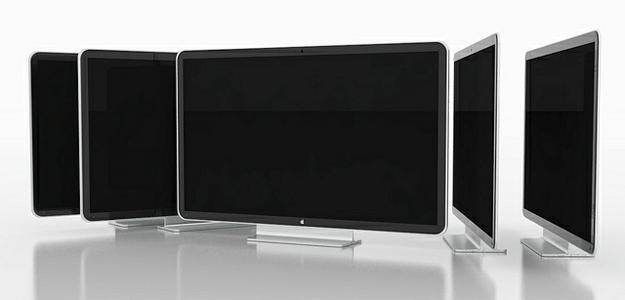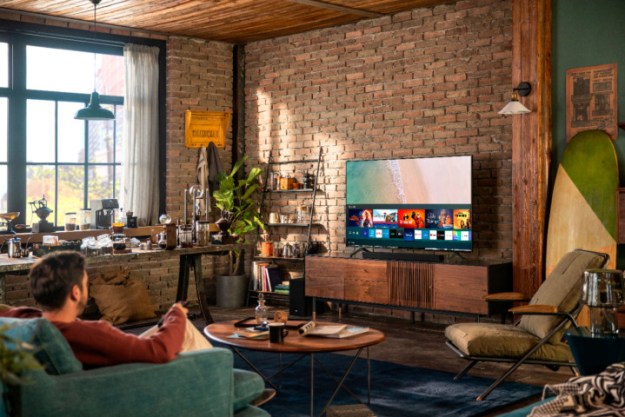
Last week, Tim Cook once again hinted that Apple was going to launch a new Apple TV product, but there were virtually no new details. We are all still working off the last comments from Steve Jobs, who indicated he had figured out how to “fix” the TV before he passed away. This in itself is interesting because Steve Jobs was not a fan of television; he thought it made people stupid. While he clearly wasn’t against movies or serious content, he likely wasn’t a fan of highly biased news programs that had little connection to the facts, reality TV shows, or most children’s programing.
Apple’s past successes
TV is very different than Apple’s other recent successes. MP3 players weren’t doing well largely because of DRM, excess complexity, and high component cost. Apple made it simple, negotiated aggressive component prices, and ignored DRM (initially). Smartphones were mostly made by RIM or Palm and largely business focused. Apple focused on consumers, made them attractive, and tied them back to the iPod. In both cases he took limited markets and made them mainstream. Tablets were similar to smartphones: focused on business, difficult to use, and very expensive. He made them relatively affordable, focused them on consumers (users), and made them simple.

The formula in all cases was to take a product class that was self limiting and find a way to get it to appeal to a larger segment by addressing the key aspects of the existing products that created those limitations.
How to win in on the big screen
The TV market is very different. Unlike MP3 players, TVs are already pretty easy to use, focused on consumers, sold at high volumes, and margins are already tight. Unlike smartphones and tablets, businesses don’t buy most of them — they are already consumer oriented and national averages suggest there are several already in every home.
This is a market that has bested companies like Gateway, Dell, HP, and Pioneer, all of which found they couldn’t compete in it. Currently, it is also a market in trouble; Sony and Panasonic are both struggling with it, and recent technologies like 3D and smart TV features haven’t been as big a hit as expected.
But these problems could also be exactly what Apple needs to solve to stand out. Smart TVs, as highlighted by Google TV and others, are struggling. There is little commonality, they are relatively expensive, their services (Netflix, Hulu Plus, Amazon, etc.) aren’t even comprehensive collectively. TiVo’s time shifting remains a niche market (with TiVo and Microsoft owning much of the related intellectual property).
So there actually is an iPod-like opportunity, but unlike what Apple initially did with iPod (providing very easy ripping of existing content) the problem is intellectual property rights for video programing. That’s a vastly more difficult nut for anyone to crack.
What would an Apple TV look like?
Let’s start with design. Apple is pretty consistent when it comes to design language, and it has to deal with the same limitations here as everyone else. Projection is too difficult to set up if external, and creates too large a product if internal, so it seems likely Apple would go with a panel technology. Samsung is moving to lock up OLED, but there are other players. Still, you would think if Apple loved OLED it would adopt the technology in its smaller devices first. Instead, Apple has gone for higher resolution in the iPad, iPod touch and iPhone, which suggests a Retina-like higher resolution panel may be its first choice on a TV, too. Higher resolution content creates bandwidth problems, and these are likely part of what is delaying this product to market, but I would expect Apple to avoid 3D and push its version of HD to higher resolutions.

Tying back to iCloud and iTunes for device sharing and purchasing content is a given. But how would Apple offer content? Steve Jobs has never been a fan of flat-rate programing, and currently passes on charges for content taking a margin off the top. However, Tim Cook may see this differently. In fact, he sees a lot of things differently. Subscriptions are the most common model for cable-type services, like Hulu Plus and Netflix. In addition, at $1 a program with four programs a day on average, you are at around $120 a month on top of whatever you pay for Internet connectivity. While that might be applied across all your Apple devices, it would still be too pricey for most consumers, and Apple likely knows this.
The other thing slowing down this future product to market is likely finding a way to provide comprehensive enough collection of content to let people turn off cable for good. Here, Apple’s close relationship to Disney (Jobs was Disney’s largest shareholder) could provide a huge opportunity (one that Sony clearly missed with its own content holdings). Jobs thought Disney programing was generally high quality, and it certainly helped that Pixar, Jobs’ own company, is part of Disney now.
Apps are a natural fit for a TV, and Apple discovered games are powerful on its mobile devices, so both will likely show up on an Apple-built TV. FaceTime is also a given, opening the door for home-to-home chats (and home-to-iPad or home-to-iPhone chats, too).
Finally, I expect that Jobs saw that owning the TV would also allow him to have some control over advertising on it. Apple could deliver unique marketing content and content from partners (app developers, carriers like AT&T, etc.) to folks through their TVs. This would create marketing synergy that no other set or consumer device manufacturer could approach.
Wrapping up: Opportunities and hurdles ahead
So the TV likely would look a bit like a large iPad, it would have a higher resolution screen, and access to unique higher resolution content. With this content, it would show very well in stores and it would likely be priced toward the high end of the segment. Behind it would be unique content deals with companies like Disney, and it would undoubtedly be an app platform with access to some iPad apps and a lot of custom apps for this new form factor. It could also have unique advertisements and Apple content (live streams from Apple events, etc.) that might make owning one more desirable for Apple fans.
The biggest hang ups are how to deliver this higher definition content, the critical content deals needed for access to it in the first place, and the creation of a unique flat panel.
You know, if Apple could pull this off, I might actually buy one of these. What do you think?
Guest contributor Rob Enderle is the founder and principal analyst for the Enderle Group, and one of the most frequently quoted tech pundits in the world. Opinion pieces denote the opinions of the author, and do not necessarily represent the views of Digital Trends.
Editors' Recommendations
- Apple close to landing streaming rights for big soccer tourney, report says
- You Asked: QLED and mini-LED burn-in, missing HDR, and Apple TV and HDMI 2.1
- Let’s discuss an Apple TV 4K with a camera
- Best Apple TV deals: Save on the Apple TV 4K and more
- Best streaming devices for 2024: Apple TV, Roku, Fire TV, and more


